Blueberry planting, care and growing
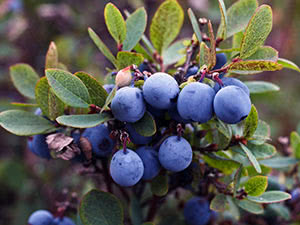 Blueberry plant vulgaris (Latin Vaccinium uliginosum), or bog blueberry, bog bilberry, or swamp blueberry, belongs to the genus Vaccinium of family Ericaceae. This deciduous shrub can be found in temperate and cold regions around the Northern Hemisphere – Eurasian species range begins from Iceland and comes to the Mediterranean and Mongolia, in North America it stretches from Alaska to California. Blueberry is also called drunk berry or blue grape. All names with negative meaning are given by mistake: people complainted that they had a headache after eating blueberry as if they had a hangover.
Blueberry plant vulgaris (Latin Vaccinium uliginosum), or bog blueberry, bog bilberry, or swamp blueberry, belongs to the genus Vaccinium of family Ericaceae. This deciduous shrub can be found in temperate and cold regions around the Northern Hemisphere – Eurasian species range begins from Iceland and comes to the Mediterranean and Mongolia, in North America it stretches from Alaska to California. Blueberry is also called drunk berry or blue grape. All names with negative meaning are given by mistake: people complainted that they had a headache after eating blueberry as if they had a hangover.
But the true reason of headache is marsh tea that usually grows nearby. In fact blueberry is a valuable natural product that is increasingly attracting the attention of gardeners. In addition to bog blueberries, growing throughout the cool and temperate climate regions, there is also such species as northern highbush blueberry (Vaccinium corymbosum). It is an American relative of the bog blueberry and it has become a full-fledged garden culture in its homeland. In Canada and the USA this tasty and useful berry is much more popular than blackcurrant.
Description of northern highbush blueberry
The genus Vaccinium also includes lingonberries, cranberries, bilberries and grouseberries, with which some botanists identify blueberries, although not all experts find it to be correct. The root system of blueberry is fibrous, without root hairs, the branches are erect, cylindrical, covered with dark gray or brown bark, the shoots are green. Bog blueberry bush reaches only 3 feet in height, while highbush blueberry reaches up to 6.5 feet and even more. Small, hard, smooth leaves of blueberries are up to 1 inch long and up to 0.8 inch wide, growing in an alternate order on short stalks. The leaves are obovate or lanceolate with a blunt tip and edges slightly curved back, the upper side of the leaf surface is tinged bluish-green due to the waxy coating, the underside of the leaves has a highly prominent veins of a lighter shade. Small quinquedentate drooping flowers with pink or white urceolate corolla that is up to 2 inches long and has 8-10 stamens sit by a few pieces on the tops of the last year's branches. The fruit of bog blueberry is oblong, up to ½ inch in length and weighing up to 0.03 ounce, blue with a bluish tinge, thin-skinned, with a greenish pulp. The fruit of highbush blueberry weights from 0.35 up to 0.88 ounce. In America one bush produces up to 22 pounds of berries. In warmer areas with more favourable weather conditions one highbush blueberry can produce up to 15 pounds of berries. The reason is that in areas with moderate climate highbush blueberry starts ripening later and only 30% of all fruits have enough time for ripening. Therefore, if you want to grow highbush blueberries in moderate climate, you should plant bog blueberry or early or mid season varieties of highbush blueberry.

Planting highbush blueberry
How to plant blueberry
Blueberry planting is undertaken in spring and autumn, but planting in spring is safer than in autumn since in summer blueberry seedlings have enough time to take root and to get stronger so that the risk of being frozen in winter is minimal. In this article we will introduce you to the agrotechnology of the plant and describe in detail how to plant blueberry properly, how to grow and care for the blueberry, namely, what the fertilizers for the blueberries are, how to water blueberry, and how to propagate blueberries. Blueberry growing is a simple process. It is more difficult to collect and save the harvest, but we will tell you about this as well.
Soil for blueberry
If you decide to grow blueberries in your garden, choose a sunny but protected from the wind site, and do not try to hide it in the shade as berries will be few, and you will not like their taste. You should pay attention to the soil for blueberry as it grows only in acid soil with 3.5-4.5 pH. Besides, blueberries prefer fallow land as it abhors predecessors. So the best site for blueberries is a sunny and quiet location with well-drained sandy-peat or peat-loamy soil. If there is no such site in your garden that will suite blueberries, you can easily create it on your own.

Planting blueberries in spring
In spring blueberries should be planted before budding. Before you plant blueberry, you must decide what type or variety will grow best in your area. In areas with a cool climate it is preferable to grow lowbush Canadian blueberries, but in warmer areas where summer is hot and long it is better to cultivate a variety of highbush blueberries. The most important thing when making a choice is to compare the time of ripening with the climatic characteristics of your area. Otherwise, blueberries will not have enough time to ripen, and then all your selfless labor of caring for highbush blueberries will be in vain.
It is better to purchase seedlings with a closed root system in the pots or containers, but you cannot simply put them out of the container into the pit, because the fragile roots of blueberries will not unfold in the ground, and the plant will not be able to develop fully. Before planting blueberries, put the container with seedling in water for a quarter of an hour, then remove the seedling from the container and try to gently knead the soil clot and unfold the roots of blueberry.
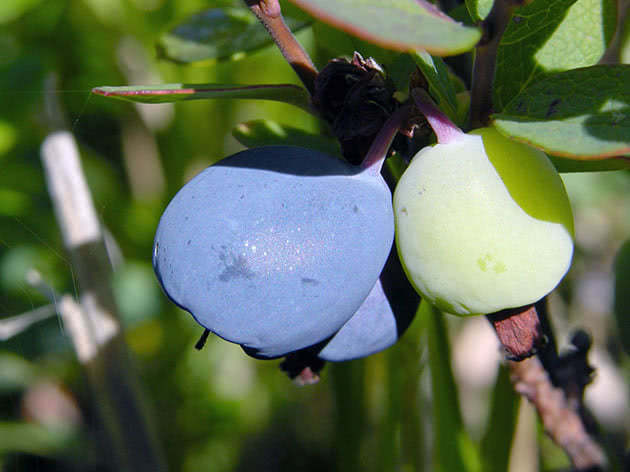
Before highbush blueberry planting as well as bog blueberry planting, you should prepare pits 2х2 feet size and 1.6 feet deep at the distance of 1.6 feet from each other for low varieties, 3.2 feet for mid-high varieties, and 4 feet for high varieties. The distance between the rows should be from 3.2 to 3.8 yards. The sides and bottom of the pit should be loosened to pass the air to the roots. Then you should add acid substrate for the blueberry to develop: put high moor peat mixed with sawdust, pine needles and sand, add 1.7 oz of sulfur for the soil oxidation, carefully mix and tamp the soil. Do not add any fertilizers, especially organic ones, as they will alkalize the soil. Now you can put the seedling to the pit, unfold its roots, fill with soil and deepen the root collar at the depth of 1 inch. After being planted, the seedlings are watered and the soil around them is mulched with a 5 inch layer of softwood sawdust, bark, straw or peat.
Planting blueberries in autumn
The order of blueberry planting does not depend on the time of year, and it is described in the previous section. But if planted in autumn, it is necessary to remove all weak branches of the first year seedlings and it is desirable to shorten the developed branches by half. If seedling is more than two years, there is no pruning undertaken after planting.
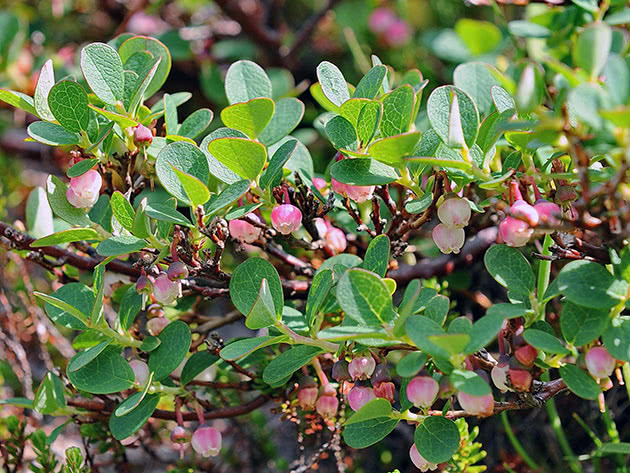
Care for blueberries
Growing highbush blueberries
Several times during the season you should loosen the soil in the area with blueberry at a depth of about 3 inches. But please keep in mind that too frequent loosening makes blueberries lose moisture and too deep loosening damages horizontally located root system that is only 6 inches under the surface. Therefore, it is very important to mulch the soil of the site with blueberries. You can loose soil without removing the mulch that needs to be refilled once in two or three years. Do not let weeds grow on the site with blueberries, remove them immediately when noticed.
In addition to loosening and weeding, care for blueberries also implies timely watering, pruning and fertilizing.
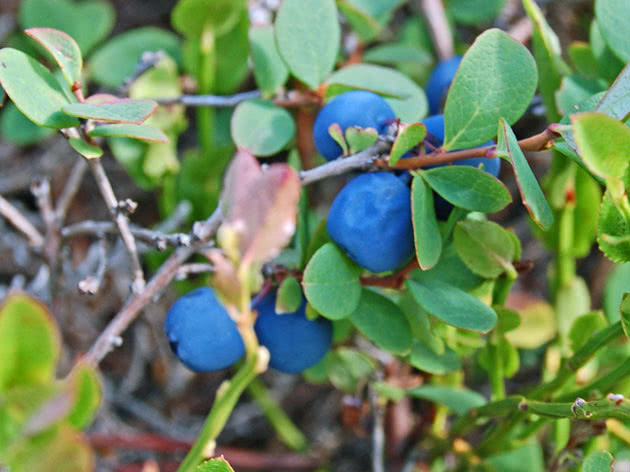
Blueberry watering
Proper watering is very important for the blueberry. The task is to provide roots with enough moisture, but at the same time you should ensure that water will not stagnate for more than two days. Otherwise, the bush may die. Blueberry watering should be carried out twice a week, pouring one bucket of water under every adult bush early in the morning and after sunset: a bucket of water under every bush twice a day twice a week. Especially blueberry needs watering in July and August during fruiting, when the bush starts forming flower buds of the future harvest, and if the plant endures a lack of moisture, it will impact negatively on the quantity and quality of fruits of current and the next harvest. In the hottest summer days blueberry bushes need not only watering, but also spraying to avoid overheating. This should be done early in the morning and after 4 p.m.

Blueberry fertilizing
Being not very demanding to soil fertility, blueberries reacts well to mineral fertilizers that are best to be used at the beginning of spring, in the period of sap flow and budding. Organic fertilizers are absolutely contraindicated for blueberries! The best fertilizer for blueberries are ammonium sulfate, potassium sulfate, magnesium sulfate, zinc sulfate and superphosphate. These fertilizers are the most appropriate for blueberries. Nitrogen fertilizers (ammonium sulfate) are added at three stages: when sap flow starts, add 40 % of the required annual amount of nitrogen fertilizers; in the beginning of May add 35%, and in early June add 25 %. On average it is 2.5-3 oz of fertilizer per bush. From summer until next spring nitrogen fertilizers will not be needed. Phosphorus fertilizer (superphosphate) is added in summer and autumn at the rate of 3.5 oz per bush. Magnesium sulfate is added once per season at the rate of 0.5 oz per bush. Potassium sulfate and zinc sulfate are added once per season at the rate of 0.07 oz per plant.
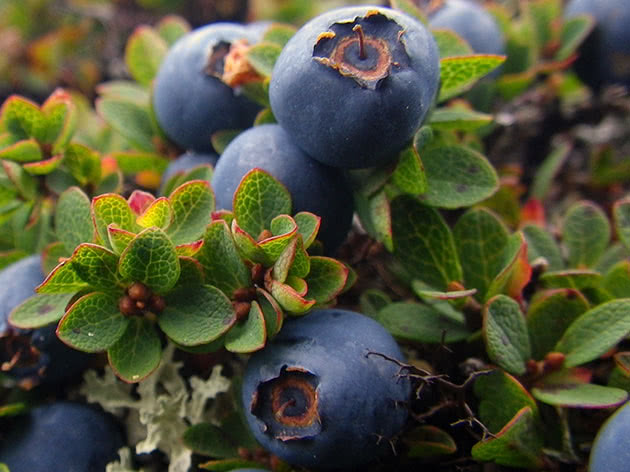
Blueberry propagation
Blueberry is propagated by seeds and vegetatively. Seeds are extracted from berries collected from healthy bushes. They should be slightly dried out and in autumn they are sown in the furrows that are digged over with sour peat. If you decide to sow seeds in spring, they need to be pre-stratified for three months in the refrigerator, and then they are sown in the furrows at a depth of 0.4 inch and covered with a mixture of peat and sand in a ratio of 1:3. For seed germination it is necessary to create certain conditions: air temperature should be 73-77 ºF, humidity should be about 40 %, and also you should provide regular watering, soil loosening and weeding. Nitrogen fertilizer is added only in spring of the second year of seedling growth. In two years, the seedlings are planted to a permanent place.
Propagation of blueberries by cuttings is faster and more reliable than generative reproduction. For this purpose, rhizome cuttings of blueberries are used. They are cut in late autumn after leaf fall or early spring, before the sap flow. Optimum length of cuttings is 3-6 inches, and it is better to take thick cuttings for the roots to form quickly and for the growth to begin as soon as possible. To activate the rooting, cuttings are stored at 34-41 ºF during one month, and then they are planted obliquely in a mixture of sand and peat at the ratio of 3:1 and covered by a 2 inch layer of the same substrate. If you care for cuttings properly, in two years you will get well-developed seedlings that can be planted to a permanent place.

Blueberry can be propagated by bush dividing. The bush is divided so that each part of the rhizome is 2-2.8 inches long. The divided parts are planted in a permanent place at once. Bushes grown from seeds start producing fruits in seven or eight years, and those that were obtained through vegetative propagation can start producing fruits in four years.
Blueberry pruning
For regular fruiting blueberry requires pruning, which is best carried out in spring, before the budding, but if you notice sick branches in summer or autumn, you should not wait until spring. You can remove suspicious shoots immediately and burn them. Also you should remove the flowers of the first year bushes as this beneficially influences on the proper development of the bush. Young 2-4 year old bushes require pruning to form a strong skeleton that allows the plant to bear the weight of a good harvest, so you should cut out the weak, sick, frostbitten, lying on the ground branches, and remove the basal shoots. If the bush is 4 year old, remove sick and weak branches. If the bush is more than 4 year old, remove the shoots that are 5 or more than 5 year old. If the bush is 1 year old, just leave the 3-5 strongest shoots. Bushes of erect varieties are trimmed in the middle part of the bush. The sprawling bushes require cutting of the lower drooping branches. It is important not to let the branches of neighboring bushes be very close to each other as it can badly affect the taste of berries and ripening time.

Blueberry in autumn
The fruits of blueberry are collected once a week after the beginning of fruiting. It is better to do this early morning after the evaporation of dew. When berries get the right color but are still dense, you need to wait a few days more for them to become ripe and soft. During this time the berries will increases the mass and the sugar content. Harvested fruits should be immediately placed in the refrigerator and kept at a temperature between 32 and 36 ºF up to two weeks in isolation from other products in order to avoid the absorption of foreign odors. For longer storage, washed and dried blueberry berries are laid in a single layer and placed in the freezer. After been thoroughly frozen, they are put in the container and again placed in the freezer. You can also dry the berries and make drinks, decoctions and infusions in winter.
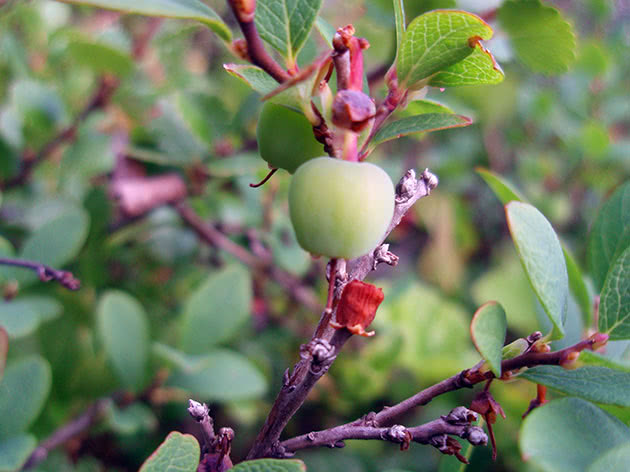
If in your area there are severe frosts, blueberries need to be covered as it can get frozen to death at -13 ºF, especially if there is no snow. Preparation of blueberry bushes for wintering needs to be started after harvesting. You need to slowly pull the branches to the ground by throwing a loop of twine or wire on them, then fix the bush on the surface, cover it with burlap (it is better not to use polyethylene since blueberries cannot breathe under it) and lay spruce branches on the top. When or if the snow falls, sprinkle spruce branches with snow. You can remove all cold protection layers only in spring. If in your area there are no such cold winters, the bush can be left uncovered, especially if you grow winter-hardy varieties.
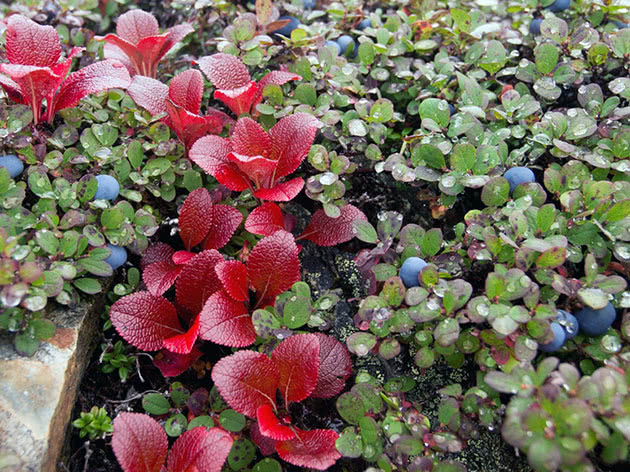
Pests and diseases of blueberries
Pests of blueberries
Planting and caring for the highbush blueberries must be carried out in accordance with agrotechnical rules, and then your plants will be healthy and resistant to diseases. But sometimes it is necessary to protect even healthy plants. Most often blueberry suffers from birds that peck the ripe fruits. In order to preserve the harvest, gently pull a net with fine mesh on the bush. As for the insects, they do not cause significant damage to blueberries, although each year it differs, and sometimes in spring blueberry bushes can be attacked by the may-bugs and chafers, gnawing round the leaves and flowers of the plant and causing blueberry yield decreases. In addition, the beetle larvae eat up the roots of the bushes. Also, blueberry can suffer from pine moth caterpillars, leaf rollers, scale insects and aphids. Beetles and their larvae need to be collected by hand and drown in a bucket of salt water, and in the struggle with other pests the best remedy is spraying blueberry with insecticides both for preventive purpose (early spring and after harvest), and for treatment when you have found blueberries pest.

Blueberry diseases
Most of all, blueberries suffer from fungal diseases, such as cancer of the stem, branches drying (phomopsis), gray mold (botrytis), moniliasis, white spot (septoria spot) and double spotting. You should know that almost all fungal diseases of highbush blueberry are provoked by water stagnation in the roots of plants created by improper watering or poor soil permeability. You should control this process otherwise blueberry bushes can be not destroyed by fungal diseases. As a preventative measure we recommend you to process the plants with Bordeaux mixture annually in early spring and after harvest. And as a treatment of disease you should use fungicides or Bordeaux mixture.
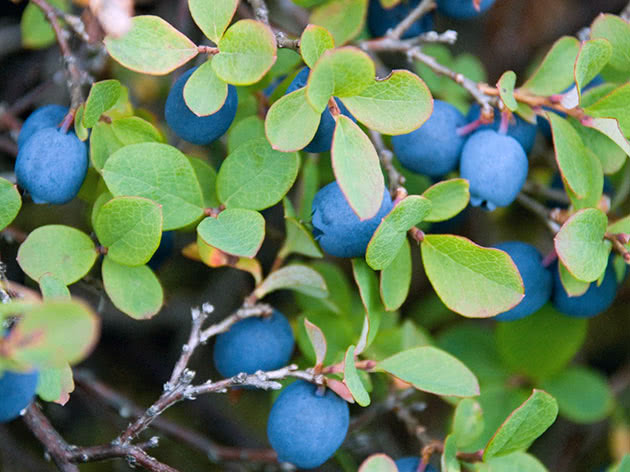
In addition to fungal diseases blueberries can be infected by viral or microplasma diseases like mosaic, dwarfing, red and necrotic ring spot, filamentous branches. There is no treatment and infected plants must be removed and destroyed.
There can be also problems caused by violation of the farming rules. For example, there can be complaints about blueberries getting yellow – first, leaves become light green and then turn yellow. Most likely, the problem is that the soil is not acidic enough. Add the peat, and gradually the appearance of the foliage will be the same with new green leaves. Blueberry leaves get yellow as a result of the lack of nitrogen. Moreover, this makes berries small, and shoots stop growing. Nitrogen fertilizers are added into the soil each spring at three stages. But if blueberry leaves turn red, these are the first signs of stem cancer or drying branches.

Blueberry varieties
Currently blueberry varieties are divided into four groups:
- Lowbush blueberry – its basis is a blueberry angustifolia, crossed with genetic materials of European blueberry and northern blueberry;
- Northern highbush varieties are characterized by high winter hardiness and late fruiting period. They were cultivated from the North American species of highbush blueberry using the genetic material of bog blueberry;
- Southern highbush varieties are complex hybrids of northern highbush blueberry and some South species of blueberry that helped make new varieties drought-resistant. Besides, southern highbush varieties of blueberry are less dependent on the soil pH value;
- Mid-highbush varieties were created by further saturation of highbush varieties by genetic materials of bog blueberry that increased their cold-hardiness. These varieties can tolerate temperatures up to -40 ºF;
- Rabbiteye blueberry – the main variety of this group is a virgate blueberry the hybrids of which demonstrate improved adaptation qualities to the hot weather conditions and the low content of organic matter in the soil. The growing season of these varieties is very long, so it makes no sense to grow them in areas with a cool and temperate climate as not all berries will have enough time to ripen before winter.
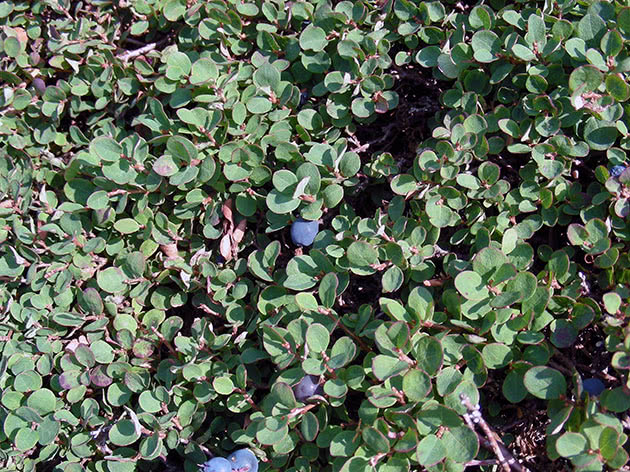
Among these five groups, only northern highbush blueberry is suitable to grow in moderate climate zone. Therefore we offer you the description of the blueberry varieties that are easily grown in the areas with temperate and cool climate.
- Bluegold is a mid-high half-spreading bush with the sweet-sour berries of medium size that ripen in the middle of the season. This is a cold hardy variety that requires trimming and heavy pruning;
- Patriot is a highbush mid-season variety. Its bush is spreading, 1.6 yard in height, with light-blue berries with dense peel ripening in July-August. It produces stable high yields – up to 15.4 pounds of berries from a bush. The variety is resistant to cold and common blueberry diseases;
- Chippewa is a mid-high early fruiting variety up to 3.2 feet tall with medium and large light-blue sweet berries. This variety is characterized by cold-resistance as it can tolerate the temperatures up to -22 ºF. This variety can be easily grown in the garden or even in containers;
- Duke blooms late but ripens early. This variety is 6.5 feet high. It blooms late after spring frosts and early fruiting guarantees high yield of medium and large berries that don’t become smaller over the years. The variety is cold-hardy but requires heavy pruning;

- Sunrise is a mid-high spreading bush with a weak shoot forming that requires not so often pruning as other varieties do. Large, slightly flattened, dense, tasty berries ripen in mid-July. One bush can produce up to 8.8 pounds of berries. Unfortunately, the variety can be damaged by spring frosts;
- Chanticleer is a midhigh bush with upright branches that blooms after spring frosts. Medium sized, light blue, sour-sweet berries ripen in late June. One bush can produce up to 8.8 pounds of fruits. The variety has a high cold hardiness;
- Northland is a low spreading bush, only 3.2 feet high and has high yields of 11-18 pounds of medium sized, dense, blue, tasty berries. The variety is characterized by cold-hardiness and a short vegetation period. All berries ripen before winter. This variety is highly valued in ornamental floriculture for its compact size and low height;
- Elizabeth is a high spreading bush with upright branches and reddish shoots that is the sign of high cold-resistance. Yields range from 8.8 to 13 pounds of berries from a bush. It is a late season variety with the best taste qualities: very sweet, fragrant large berries up to 0.86 inch in diameter begin ripening in early August. Unfortunately, not all berries have enough time to ripen.

Blueberry qualities – benefits and harm
Benefits of blueberries
Harm and benefits of blueberries have long been the scientists’ interest. Scientific research has shown that this berry has a number of unique qualities. It protects the body from radiation, improves bowel and pancreas, slows the aging of nervous cells, strengthens the walls of blood vessels. Blueberries have choleretic, antiscorbutic, anti-sclerotic, anti-inflammatory, cardiotonic and hypotensive action. Blueberry fruits contain pro-vitamin A, vitamins B1, B2, C, PP that are responsible for the elasticity of the skin capillaries and reduce the risk of varicose veins; six essential amino acids, calcium, phosphorus and iron, the form of which is almost completely absorbed by the human body. Blueberries are used effectively in the treatment of rheumatism, atherosclerosis, hypertension, purpura rheumatica, angina and other diseases.
Blueberry juice is prescribed to treat diabetes, diseases of the gastrointestinal tract, fever. Blueberries relieve spasm of the eyes and help restore vision. Blueberry contains pectins that help bind and excrete radioactive metals. And due to the content of highly active antioxidants blueberries prevent the formation of cancer cells in the body.
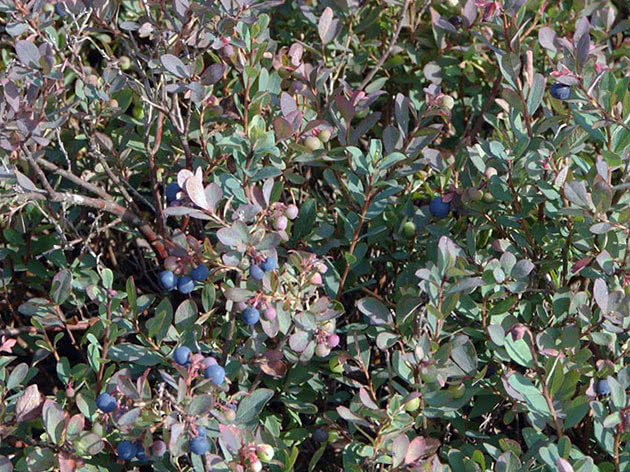
In folk medicine, blueberry is eaten raw, as well as in the form of decoctions, infusions and tinctures. The benefit of blueberry is evident for both ill and healthy people who strengthen their immune system and saturate the body with vitamins by consuming blueberry. However, not only are berries used as a raw material for drugs, but also blueberry leaves and shoots.
Blueberry decoction is prescribed as treatment of heart diseases. The recipe is as follows: two tablespoons of chopped young twigs and blueberry leaves are placed in an enamel pan, pour one cup of boiling water, cover the pan with a lid and put it in a water bath for half an hour, then it is cooled, filtered, with residues pressed. Boiled water is added to the resulting amount to get a cup of decoction, which people with heart disease should take one tablespoon four times a day.
With dysentery or diarrhea, pour a tablespoon of dried fruits with a glass of boiling water, boil it for five minutes, remove the lid and leave it for fifteen minutes. Take one tablespoon four times a day.
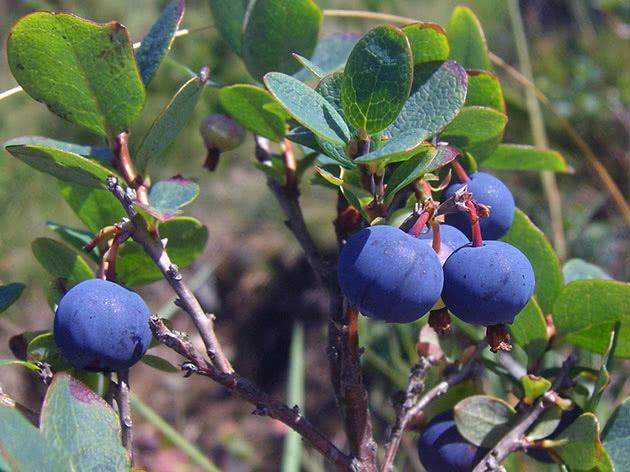
With diabetes, use this decoction: pour one tablespoon of chopped twigs and blueberry leaves with two cups of boiling water (0.7 pint) and boil it for five minutes on low heat, then remove from heat, cover, let it infuse for an hour, strain and take 0.17 pint three times per day before meal.
Blueberries – contraindications
The blueberry does not have contraindications. However, it does not mean that you can eat it enormously. Even useful food can harm you if you overeat it. Blueberries overeating can cause nausea, vomiting, and even allergic reactions. A surplus of antioxidants may reduce the oxygen in the muscles and, as a result, it leads to disruption to the muscle functions. If you consume fresh blueberries and cook blueberry drinks, teas and infusions in winter and spring, you will not only improve your health, but also live a long life like the blueberry bush that can grow and produce fruits one hundred years.
